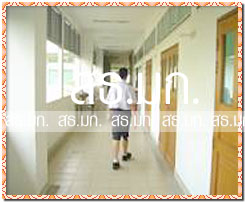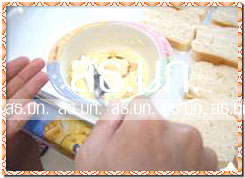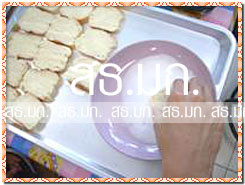 |
|
| Cognition: Memory-enhancement approaches to teaching |
| and learning for students with autism |
* Supattra Wongvisate Andrade
* อาจารย์ประจำศูนย์วิจัยการศึกษาเพื่อเด็กที่ต้องการความช่วยเหลือพิเศษ ขณะนี้ลาศึกษาต่อระดับปริญญาเอก สาขาการศึกษาพิเศษ ณ มหาวิทยาลัยนอร์ธเทิร์นโคโรลาโด ประเทศสหรัฐอเมริกา
|
Cognitive science is the one of the fundamental educations for developing humans learning by understanding mind and behavior. In my education field, the cognitive science has essential impact to increase the effective learning and the process for teaching students with autism. The children with autism have the major of lack of communication and delay of language and this is a major effect to difficulty of memory learning. However, some research has reported; the children with autism do not have a deficit in spatial memory. The children with autism also have the least difficulty with recall memory, and the visual memory reveals the strength function of learning. Another strength or talent of children with autism is a miracle of rote memory skills; the autistic children would remember things without knowing the meaning. For example, the students with autism are able to play the piano by remembering the melody or they could speak out from the whole book of story. |
|
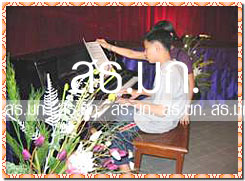 |
The cognition memory learning has been emerging in the field of special education for the last decade. It became more interesting for the teachers to support the student in the process of cognitive learning. The special education teachers created and modified the teaching activities in the classroom by using strength part of students cognitive abilities. The memory learning is the paramount that students with autism could accomplish of learning without confusion and frustration. During my teaching, our team and I have been investigating a way to develop teaching, making it the most suitable for cognitive learning. We had found that the students would cooperate, pay attention, and exhibit appropriate behavior in the activities, if the content of the subjects are not too complex. |
|
 |
I would like to demonstrate the techniques of teaching by using learning memory that includes 2 examples of class subjects, Math and Language. First Teaching Math, most students with autism are very good with math skills like calculation or reading the numbers, but they would have some trouble for interpreting math solution skills. The teachers are supposed to contribute to the students understanding of interpretation, and the students can apply the knowledge of math skills to a real situation. The best ways for students with autism to understand are 1) organize the content, 2) focus on specific skills and 3) using the picture to be a component for teaching. When we taught the students with autism about math story problems, I would use the picture to explain the meaning. Nervertheless, we would mark on the specific words that focus on the meaning, it helps students to remember the words and the meaning. |
|
 |
|
You have 2 dollars and my Dad gives me 5 dollars, how much money do you have?
The words gives me mean increasing, so we would solve the problem with plus. The visual symbol on the sentence would remind the students to memorize the word for describing the meaning. When the students do the story problem in math, they must draw a mark and the symbol on the words. This technique is very helpful for the students that they could focus on specific the words for the solution to the math problems. After the students learn math story problems in the class, we went out for practicing in real situations such as buying the food and depositing the money in a bank.
|
|
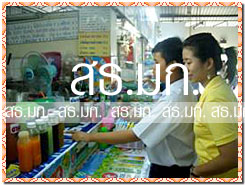 |
Another example is teaching language, the students would learn reading skills, writing skills, and conversation skills. The students would see the vocabularies which include the pictures. It would be the easiest way to remember the words, if the students see the words with the picture. Before we taught the students to spell the word as the regular students, they had difficulty learning spelling and speaking out each consonant and vowel. Thai language has very complex roots; even thought, typical people want to study Thai language. The Thai consonants consist of 44 letters, and 32 vowels that the vowels divide to 18 single vowels, 6 compound vowels, and 8 consonant like vowels. My data from observation, when the students remember whole words and connect to the picture, they exhibit reduced stress and are good with appropriate behavior. When we taught the construction of the sentence, we use the same method as teaching the word language. The students would see words, and under words include the pictures. For example, I go to the bathroom that consists of 1) the picture of that specific student 2) the picture walking and 3) the picture bathroom. This cognitive learning would help the students understand the words and transfer to the meaning. Also, the students apply the learning to practice the language with their typical peers and in the community. |
|
|
|
The cause of the students with autism difficulty to do well in cognitive learning processing is the function of the frontal lobe and temporal lobe, and how they work in a different way from the typical person. The problem of this function has shown the effect to students with autism as difficulty of memory, language, solving a problem, motor function, impulse control, emotional behavior, and social behavior. Even thought the students with autism have the trouble or have the limited learning for processing of interpretation the information, the wonderful potential of autism that the article has presented is that 90% of the students with autism exhibited visual thinking, and good rote memory skills. The teachers could support and develop cognitive abilities of student with autism by applying their strengths/talents to cognitive learning. The most emphasis for helping and enhancing memory learning includes the teachers implements, curriculum, classroom activities, and environment. |
|
 |
From the example teaching in Math and Thai language, and these were organized the strategies to develop the students with autism for improving cognitive memory learning. First, teachers personality is very important to contact and build an empathy relationship, the teachers should qualify in appropriate communication and behavior such as keeping short instruction, focusing on main content, avoiding literal thinking, demonstrate encouragement with verbal and gesture, and respect who the students are. Second, the structure of teaching includes step by step, one step at the time, using visual support pictures or demonstration of activities, and practice in the real situation. Third, the information of the subject should not be too much or too complex for the student, the suitable information for the student should be simple and concrete. |
|
|
Additionally, the classroom activities should support sensory activities, music, motor movement, and games. Those activities will develop and stimulate the process of neurological development. Added, the eligible environment and least of disturbance will advocate the encouragement the students attention, emotion and behavior. Last, practicing is essential to the opportunity for compilation between cognitive learning and application in the real social situations. These strategies of enhancing cognitive and memory learning are emphasized for students development skills. The knowledge of education will be effective if it is able to continue to contribute to the autistic students after graduation. They should be able to be more perceptive using cognitive learning and becoming independent both living and solving problems. |
|
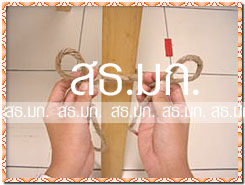 |
In this study, I have perceived the issues why the cognitive learning is important for students, the effect to students memory learning, and how to support students cognitive memory learning. Therefore, my opinion as the teacher of special education who works with severe students with autism; our special education in Thailand should go with the concept of cognitive memory learning and practicing. The determination of education supports the potential abilities of our children and builds the ample child including the emotion, the behavior, and the cognition. The concept of cognitive memory learning is utilized for the teachers to understand the process of the students learning. The teachers will be able apply the knowledge and experiment for towards a structure of teaching. Additionally, the practice will expand students with autisms knowledge for enhancing cognitive thinking, and memory learning of natural lives situation. Every teacher desires the students to accomplish what they need for developing themselves, and our goal is that our students will be able to live independently. |
|
 |
Reference |
|
Frontal Lobe. Centre for Neuro Skills. [Online serial]. Available http://www.neuroskills.com/tbi/bfrontal.shtml |
|
Kellerman, T. (2002). Memory Enhancement: Helping the child with FASD to learn and remember. [Online serial]. Available http:www.come-over.to/FAS/remember.htm |
|
Thinking and Learning in Autism. (2002). Autism Spectrum Australia. [Online serial]. Available www.aspect.org.au |
|
Williams, D., Goldstein, G., & Minshew, N. (2006). The Profile of Memory Function in children With Autism. The American Psychological Association, 20, 21-29. |
|
|
|
|
 |
|












